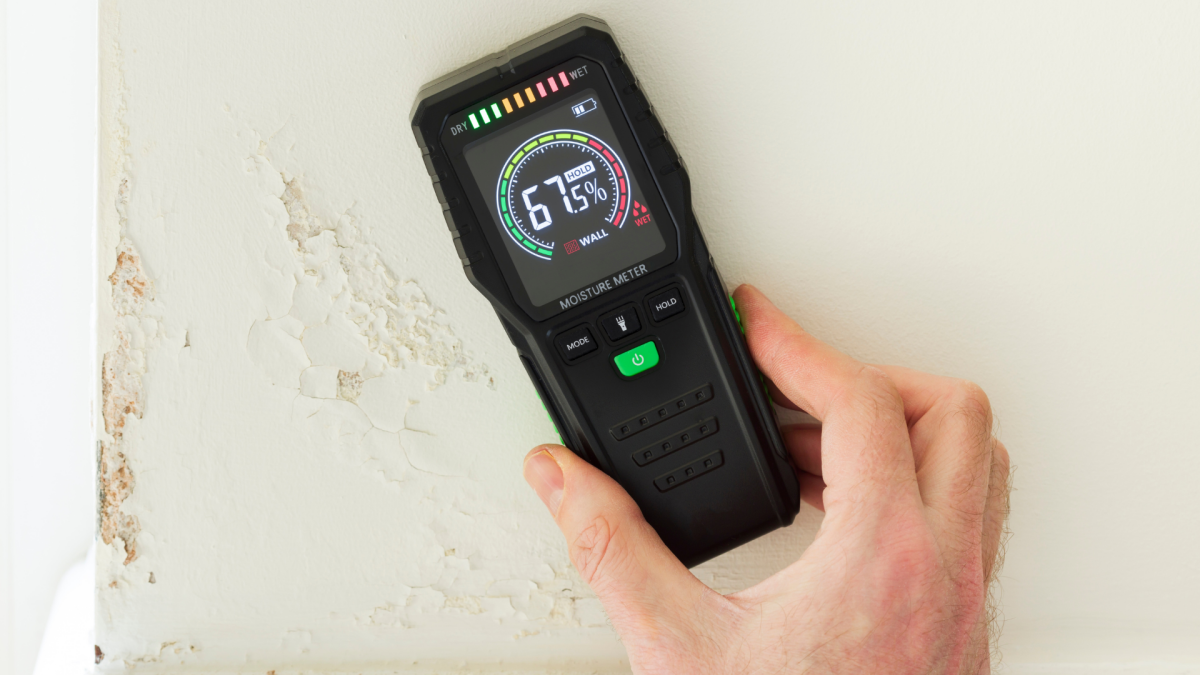Your home is under constant threat from the elements—but especially from water. From roof leaks to burst pipes—water damage is the second-most claimed loss on home insurance policies, just below “wind and hail.” In fact, there are way more losses due to water damage than fire.
And the most troubling aspect of water damage is how silent it can be. You can have a leak for a long time before the damage becomes bad enough to notice. And even if you know you have a water leak somewhere, locating it can often be difficult because water can travel a long way from the source before making its presence known. That’s why you need these five kinds of leak detectors on hand, so you’ll know when a damaging water leak erupts, and be able to find it quickly to minimize the damage.
Moisture alarms
Step one is to have water detectors with alarms set up around the house in places where leaks are probable. These alarms are typically wifi-connected and simply detect moisture beyond a normal level, ringing out an audible alarm and sending a message to your devices warning you of a leak. Having them placed in bathrooms, kitchens, laundry rooms, basements, attics, and anywhere else where the home comes into contact with water means leaks will be noticed right away instead of slowly destroying your property over weeks, months, or even years.
These alarms can often be combined with networked shutoff valves that will automatically turn off the water supply when a leak is detected. That way, even if you’re not home, the damage from a leak will be minimized.
Moisture meter
As useful as leak alarms are, they can only help if present where a water leak occurs—and they only tell you that there’s water, not where the water is coming from. Sometimes the source will be obvious, of course—if the alarm placed near your toilet goes off, chances are good that it’s your toilet doing the leaking. But if the leak begins with a pipe in your wall, one tiny spot on a large roof system, or underground, you’ll need some help locating it.
A moisture meter is a must-have for finding leaks. It’s a simple device that measures the amount of moisture trapped in a material, like drywall or flooring. By taking multiple readings throughout an area, you can pinpoint where the water is concentrated before you start tearing things open to effect a repair, saving you time and money.
Endoscopes
Sometimes you need to see inside the spaces and voids of your home to find a water leak. If you suspect a pipe is leaking in the walls, for example, and you’re getting some confusing moisture meter readings, it might be time to reach for one of the most useful tools you’ll ever own: an endoscopic camera (aka, a borescope). This is a small, flexible camera that can be inserted into a small space and fished around, allowing you to see what’s behind a wall, under a floor, or inside a soffit in your home without ripping everything open. If there’s no obvious way to insert the camera, you can usually drill a small access hole that can be easily repaired later, and the video feed will let you inspect all those pipes to see where the water’s coming from.
Pipe locator
A pipe locator is exactly what it sounds like: It locates the hidden pipes feeding water into and taking water out of your house, which are often inside walls, under floors, or buried underground. If you’re trying to figure out where a leaking pipe might be located, this tool can be invaluable, especially if other options haven’t worked.
They’re not cheap—this one from Rigid is one of the more affordable options, and it’s about $1,800 at the time of this writing. But you can easily spend $1,000 or more if a plumber comes out to locate and fix your leaking pipe, so if you’re comfortable fixing the leak yourself, a tool like this will pay for itself eventually because you’ll be able to isolate the leak, turn off water to just that area, and effect the repair.
Source: The Best Tools to Use to Find Any Leak in Your Home | Lifehacker

